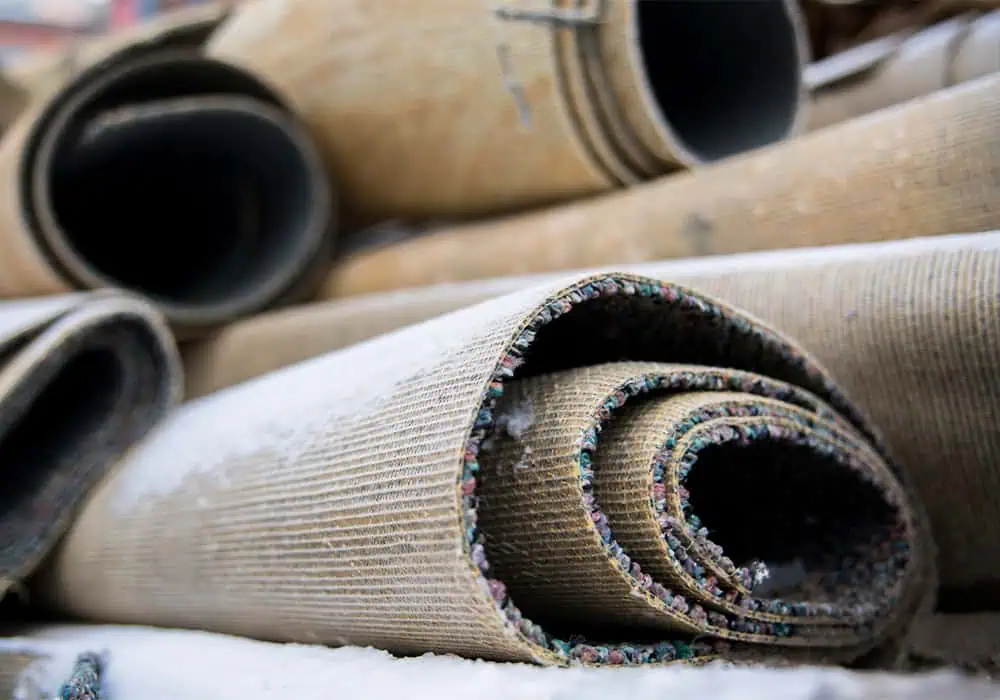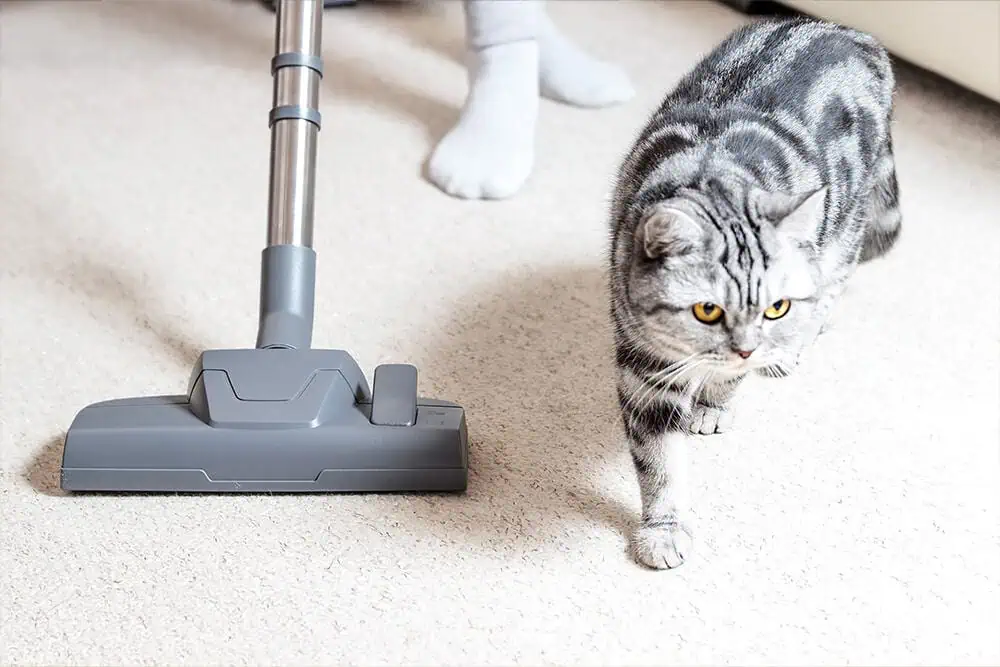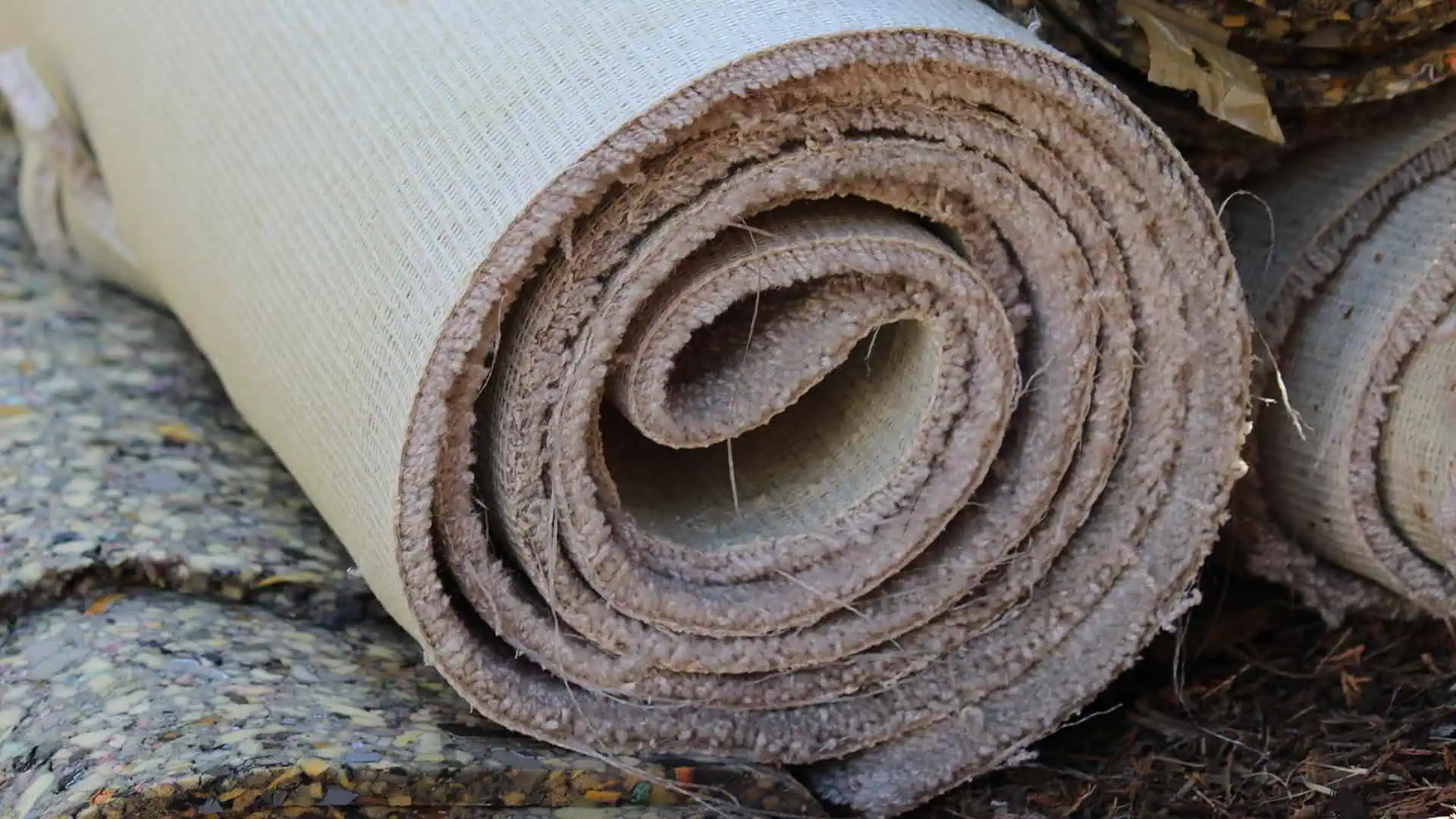The lifespan of a carpet depends on many different factors, such as the type and quality you choose, your underlay, whether you have children and pets, how much you clean it, and the amount of foot traffic it gets.
In this guide, we explore what affects a carpet’s longevity, signs that you need a new one, and how to make your next one last longer.
Quick carpet lifespan facts
The average number of years a carpet lasts:
- Budget carpet: 2 – 4 years
- Mid-range carpet: 5 – 10 years
- Premium carpet: 10 – 15 years
In this guide
Factors that influence how long a carpet lasts

Carpet quality
Higher-quality carpets tend to be more durable, resilient and better at maintaining their appearance over time. Here’s what can influence longevity:
- Material: The type of material used in a carpet can significantly impact its durability. For example, wool carpets are naturally strong and resilient, often lasting 15 years. On the other hand, lower-quality carpets—like polyester—might only last four years, as they are prone to flattening and staining.
- Density: A carpet’s density refers to how tightly the fibres are packed together. Higher-density carpets are more resistant to wear and indents, as there’s less space between the fibres for them to flatten. For example, a high-density nylon carpet will maintain its shape and bounce longer than a lower-density option, making it ideal for high-traffic areas like stairs and hallways.
- Pile Height: Short pile heights offer better durability than longer options. While longer piles are softer and appear more luxurious, they’re more prone to matting and crushing, which doesn’t work well in high-footfall spaces.
- Stain Resistance: While wool is known for its resilience, it doesn’t cope well with stains, making it a regrettable choice for some. Similarly, Sisal is a hard-wearing, eco-friendly fibre that can last up to 10 years. Although durable, this material is more susceptible to staining and moisture and performs best in dry areas (and clean households!). High-quality nylon carpets offer advanced stain protection, making them a longer-lasting option for young families and animal lovers.
Level of foot traffic
Carpeted areas with heavy footfall—like hallways, stairs and living rooms—will wear out much faster than lower-footfall spaces like bedrooms.
Regular use flattens the carpet fibres, affecting their bounce and appearance over time.
Messy fingers and paws
Homes with pets and children typically experience more spills, dirt, and wear, which shortens the carpet’s lifespan.
Sharp claws and pens that have ended up in the wrong (small) hands are high on the carpet-damage list.
How well you look after it
If you don’t maintain your carpet, don’t expect it to last. Thanks to static electricity, carpet attracts dirt and dust like a magnet, which, if left for too long, grinds into the fibres and causes them to break down faster.
A carpet that’s vacuumed and professionally cleaned regularly will look its best for longer.
Underlay type
Laying a high-quality underlay beneath your carpet is crucial for boosting its durability. Decent underlay offers under-foot cushioning, reduces wear and adds years onto the life of your carpet.
Choosing the right type of underlay is especially important in high-traffic areas or those with heavy furniture. The extra support – from dense materials like sponge rubber – can prevent indents and stop the carpet wearing out too quickly.
Age
It’s easy lose track of how many years a carpet’s been down. Often, it’s only when you notice how much it’s faded, how wrinkly it looks, or how hard it’s started to feel underfoot that it enters your mind.
Even with loads of TLC, eventually, you’ve just got to let that old faithful go.
Signs your carpet needs replacing

Stains that won’t budge
If your carpet has stains you can’t get out—despite trying different cleaning options—it might be time to replace it.
Stubborn marks from things like red wine, oil, ink, makeup and coffee can become permanent eyesores that are hard to hide.
Matting and flattening
Over time, carpet fibres can become matted and worn, especially in high-traffic areas. Once the fibres are flattened, they can’t be revived, and getting a new carpet is pretty much your only option.
Similarly, if you notice any bald spots or tears, it’s time to say goodbye.
Lingering odours
If your carpet still smells weird after cleaning, it’s a sign that the odour has penetrated deep into the fibres or underlay – and that’s bad news.
A musty odour can indicate that your carpet is breeding bacteria in the pile, so if you want a fresh-smelling carpet again, it’s time for a replacement.
Allergy flare-ups
If you have allergies, you’ll know when your carpet’s past its sell-by date. Older carpets can encourage dust mites, which can trigger allergy symptoms that feel like hay fever.
If deep cleaning doesn’t offer any relief, it’s much healthier to get fresh flooring.
Worn underlay
As we’ve already covered, the underlay is as important as the carpet itself. When it’s served its purpose, you’ll notice less comfort and more noise underfoot.
If your carpet starts to lose its shape, sag, or feel uneven, it’s time for new underlay and carpet.
How to make your carpet last longer

There are a number of things you can do to influence how long your carpet lasts. These are the ones that will make the biggest difference:
- Vacuum your carpet at least twice a week to remove trapped debris that can damage fibres. To keep its condition and prevent bacteria and mould, we recommend having it professionally shampooed twice a year.
- Invest in a quality carpet underlay for extra cushioning and support, to prevent wear, and to extend the life of your carpet. This is even more important in high-traffic areas.
- Move your furniture around from time to time to avoid certain areas of the carpet wearing faster than the rest of it. This also helps prevent permanent indentations in the carpet pile.
- Protect heavy footfall areas with sturdy rugs or runners. These can absorb a lot of the wear and tear, keeping your carpet’s condition for longer.
- Insist on a no-shoes policy in your home. Shoes carry dirt and germs that get ground into your carpet, that can cause structural damage and breed illness-causing bacteria over time.
- If you spill something, act fast. Also make sure you use a cleaner that’s compatible with your carpet type.
Make it last
It’s clear that a variety of factors can influence how long carpet lasts. This guide should help you spot the signs that your carpet is ready for replacing, and arm you with top tips on how to keep your next carpet looking fresh for longer.

